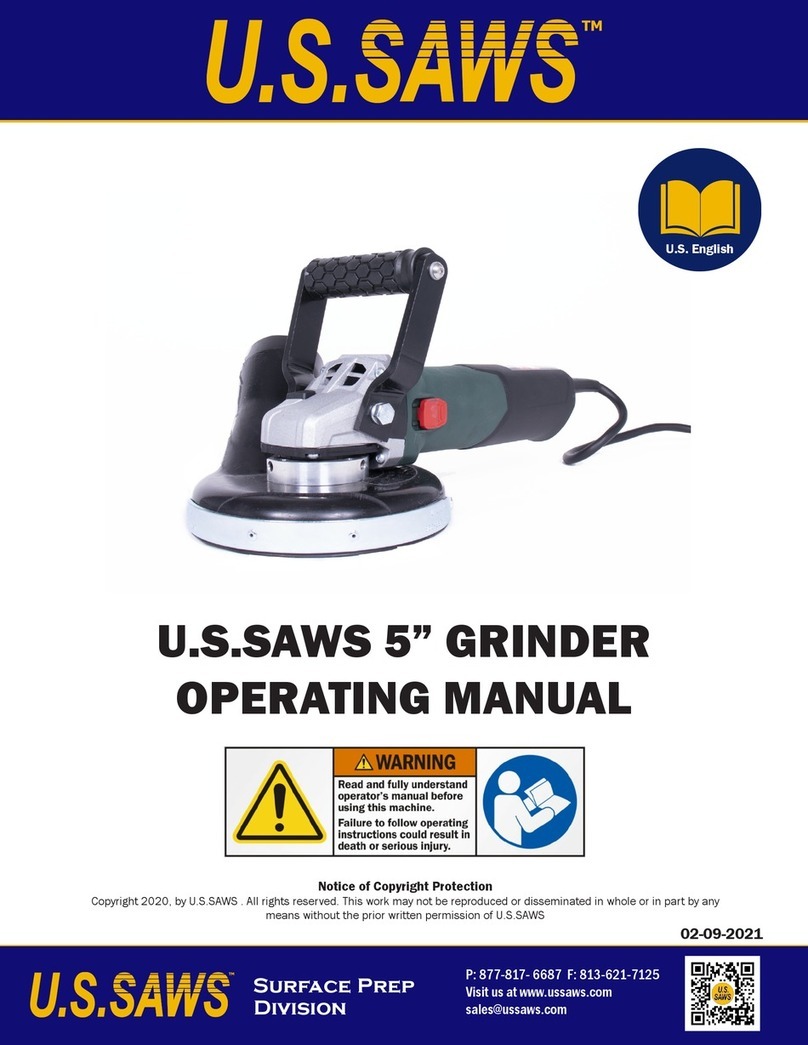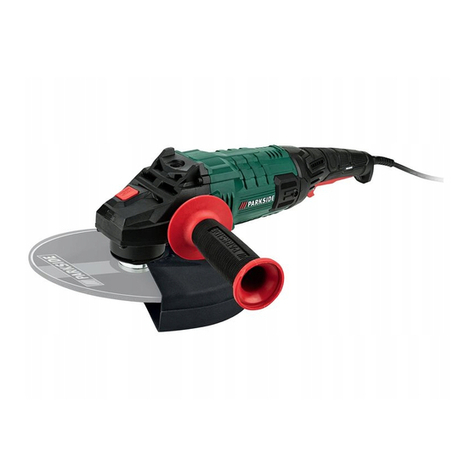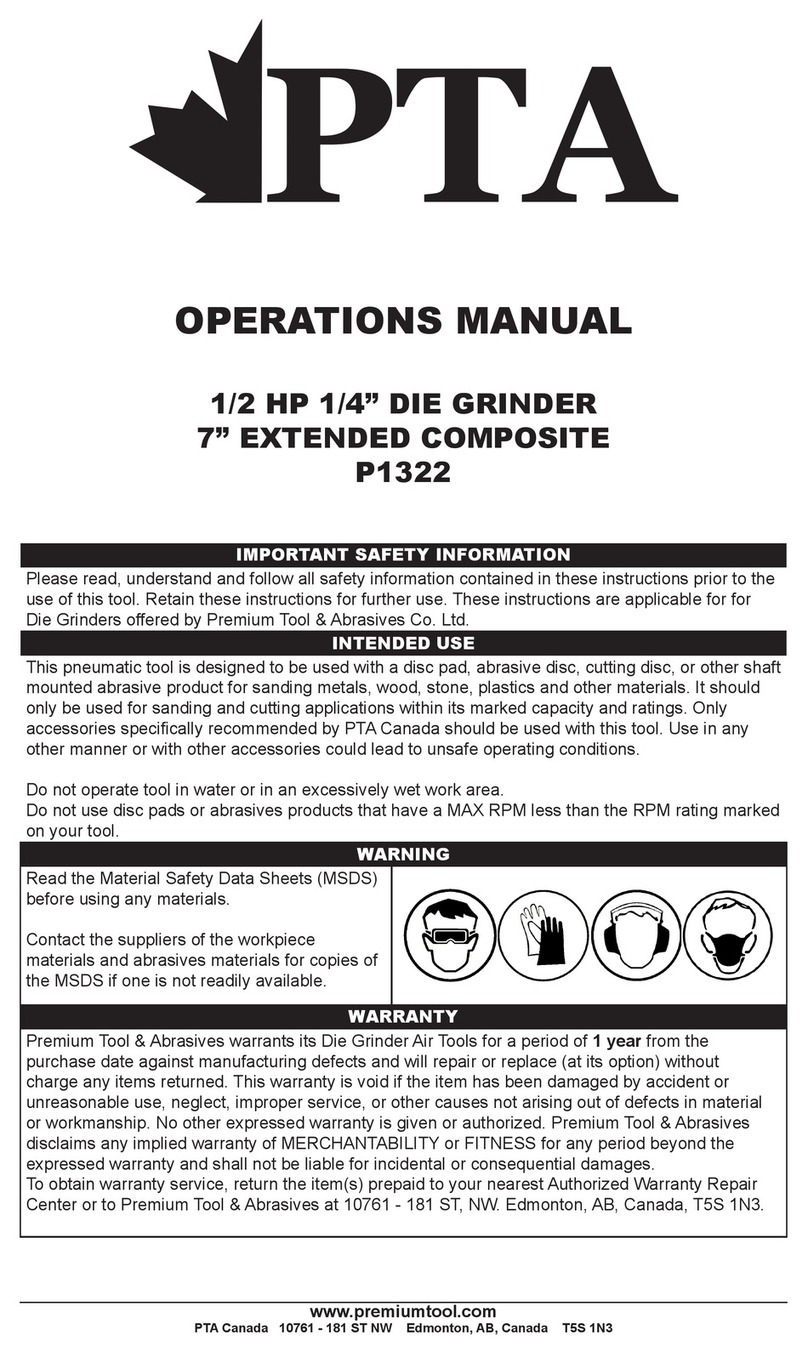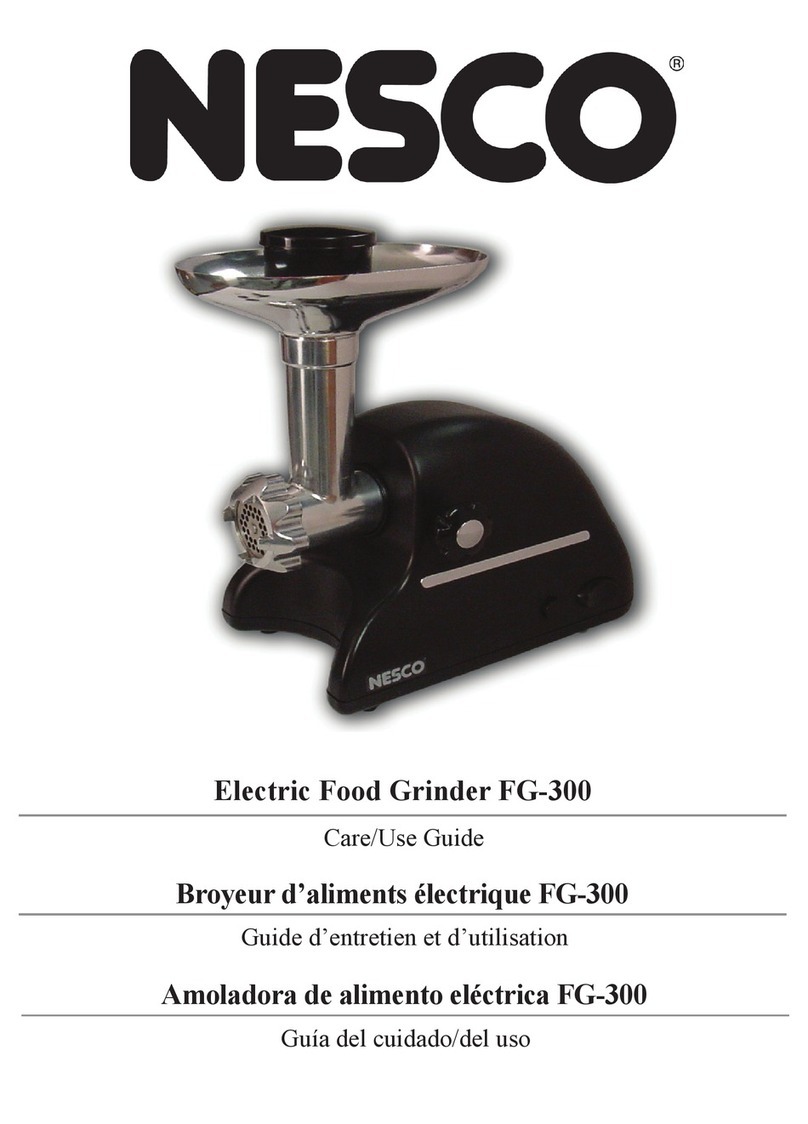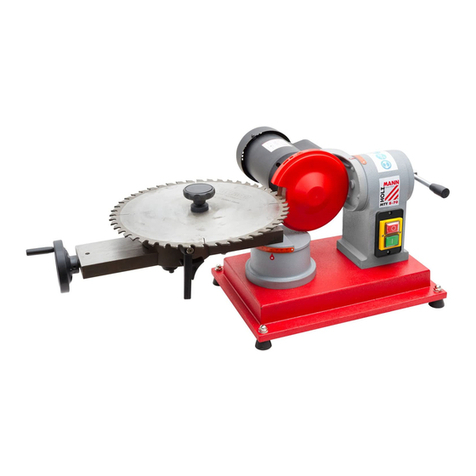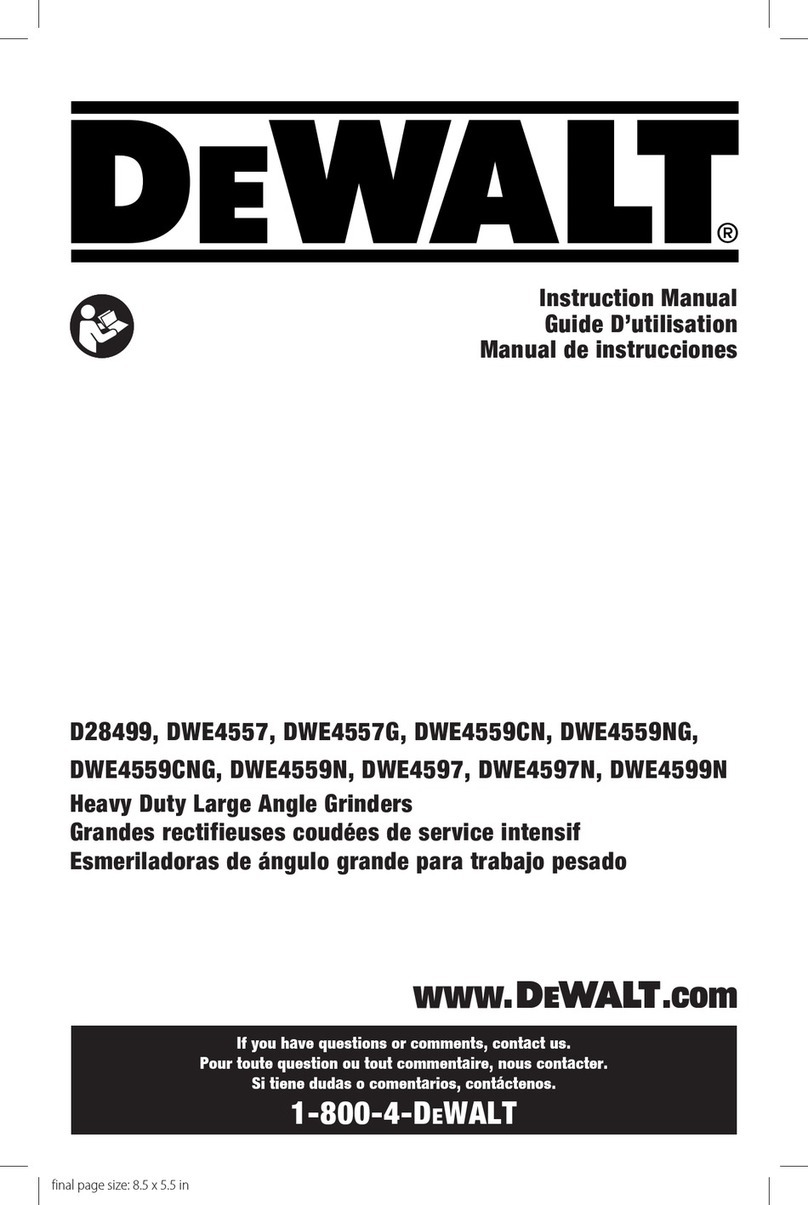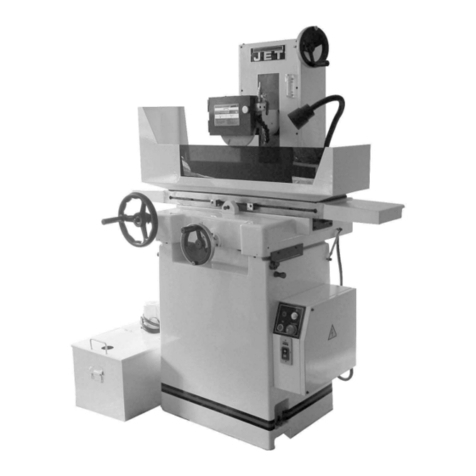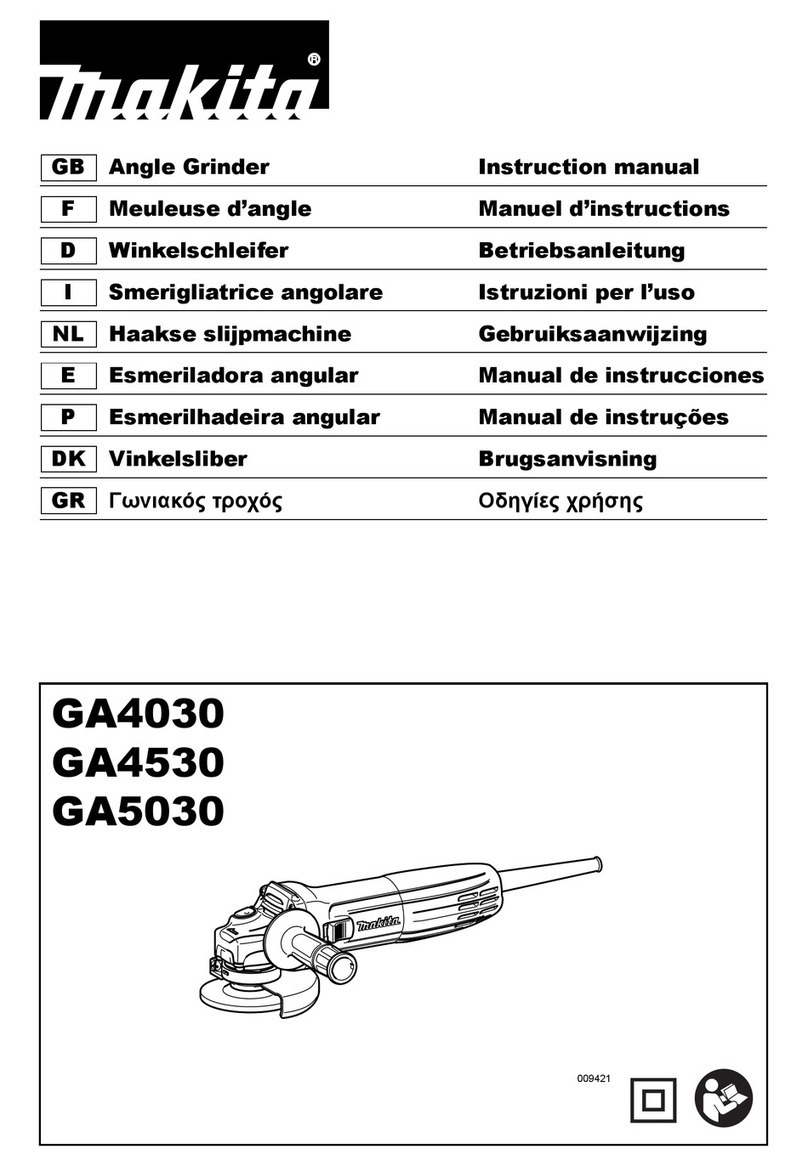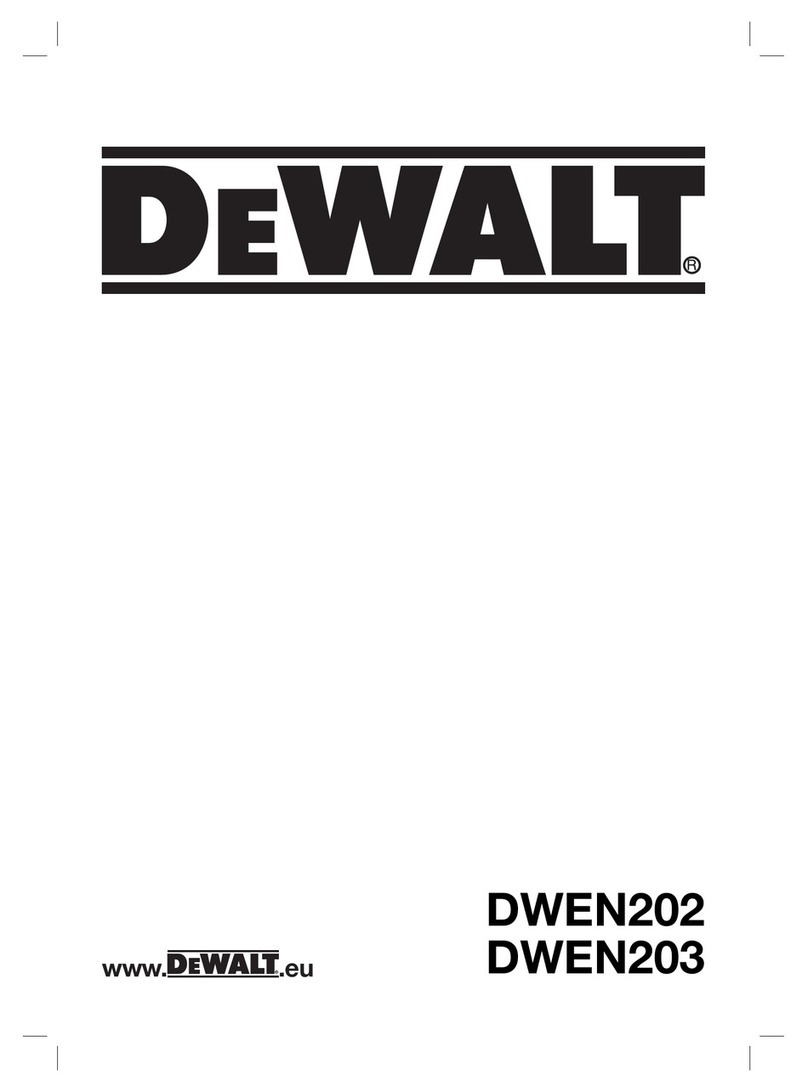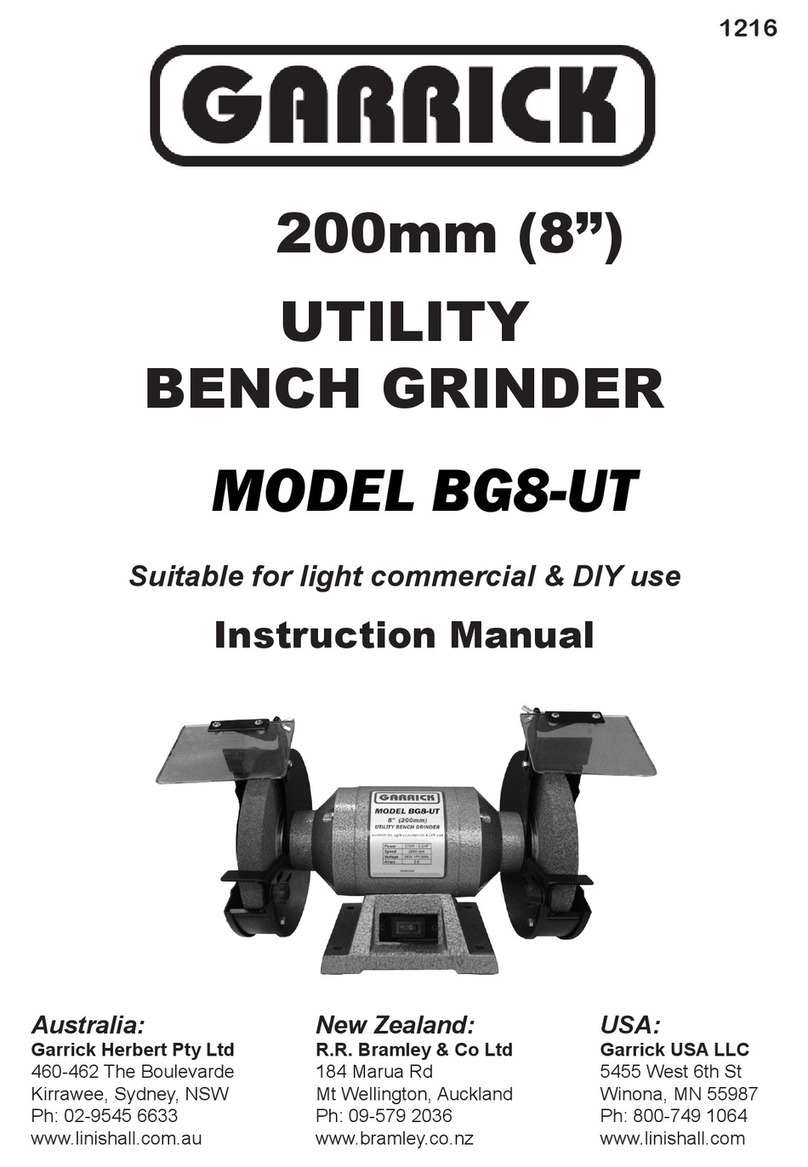8
on the tool. Accessories that operate at speeds higher than their rated speed may break
and fall apart.
5. The outer diameter and thickness of the accessories must be within the nominal range for
the electromechanical tool. Accessories of the wrong size cannot be adequately
protected or controlled.
6. The threaded attachment of the accessory must match the thread on the grinder spindle.
The clamping hole of the accessory, which is mounted on the flanges, must be suitable for
the defining diameter of the flange. Accessoriesthat do not match themounting dimensions
of the power tool will be unbalanced, may vibrate excessively, and may cause loss of
control.
7. 2. Damaged accessories must not be used. Before each use, check the accessories: for
grinding wheels, chips and cracks, for backing pads, cracks, tears or excessive wear, for
wire brushes, loose or cracked wires. If the accessory or tool has been dropped, check for
damage or install an undamaged accessory. After checking and fitting the accessory, the
operator and bystanders must stand so that they are out of the plane of the rotating
accessory and the tool must be idle at maximum speed for one minute. During this trial
period, damaged accessories will usually break or disintegrate.
8. Personal protective equipment must be used. Depending on the application, a face shield
or safety goggles must be worn. A dust mask, hearing protection, gloves and a work apron
capable of retaining small fragments of abrasive or workpiece must be used toa reasonable
extent. Eye protection must be able to contain flying debris that is generated during various
work activities. The dust mask or respirator must be able to filter out particles that are
formed during the activity. Prolonged exposure to high-intensity noise can cause hearing
loss.
9. Bystanders must remain at a safe distance from the work area. Everyone entering thework
area must use personal protective equipment. Fragments of the workpiece or damaged
accessories can fly off and cause injuries even outside the immediate work area.
10. When performing an operation where the machine tool may touch a hidden guide or its own
supply, the power tool must only be held by insulated gripping surfaces. Contact of the
machine tool with a "live" wire can cause the non-insulated metal parts of the power tool to
become "live" and can lead to electric shock to the user.
11. 2. The flexible feed must be located out of reach of the rotating tool. If the operator loses
control, the moving lead may be cut or reground, and the operator's hand or arm may be
drawn into the rotating tool.
12. Electromechanical tools must never be set down until the tool has come to a complete stop.
The rotating tool can catch on the surface and pull the tool out of the operator's control.
13. Electromechanical tools must never be started during transport on the operator's side. If
the tool is accidentally touched, it may hook on the operator's clothing and pull on the body.
14. The air vents of the tool must be cleaned regularly. The motor fan draws dust into the
housing, and excessive accumulation of metal dust can cause electrical hazards.
15. Electromechanical tools must not be used near flammable materials. These materials could
ignite from sparks.
16. Accessories that require liquid cooling must not be used. Use of water or other coolants
can cause electric shock or death.
ADDITIONAL SAFETY INSTRUCTIONS FOR ALL WORK ACTIVITIES
REVERSE AND RELATED WARNINGS
1. Kickback is a sudden reaction to a pinch or jam of a rotating disc, backing pad, brush, or
other accessory. Clamping or jamming will cause the rotating tool to stop abruptly, which in

